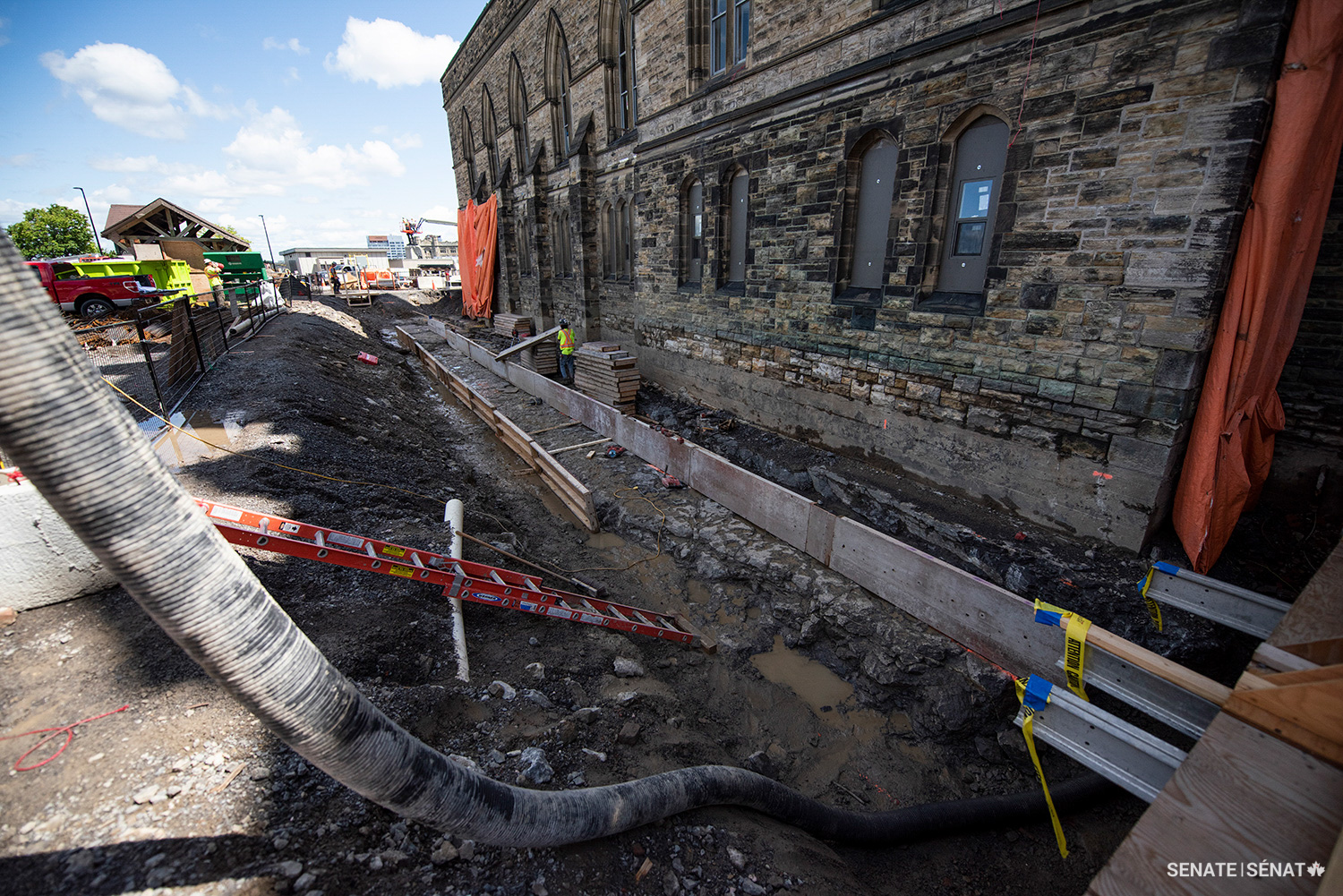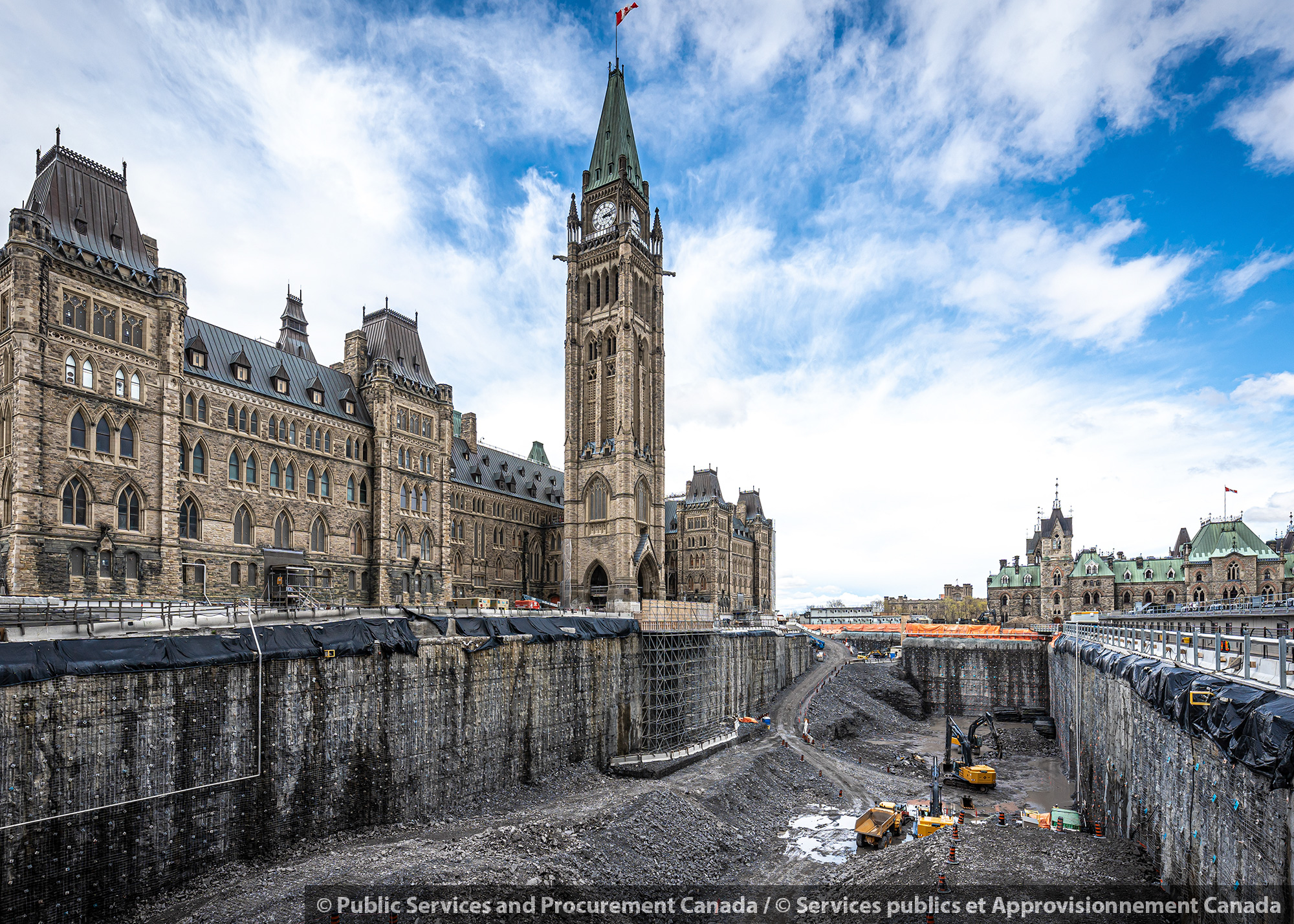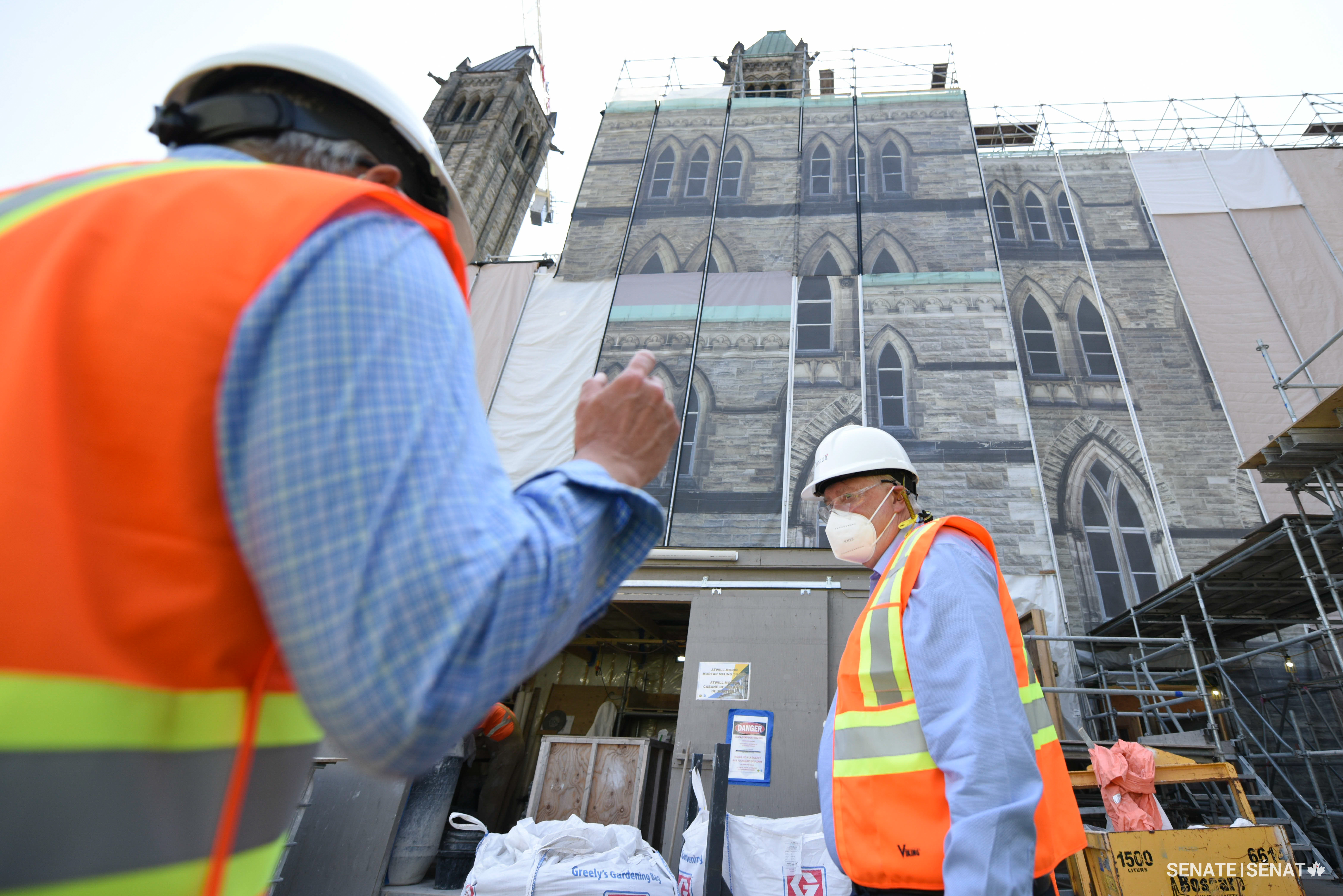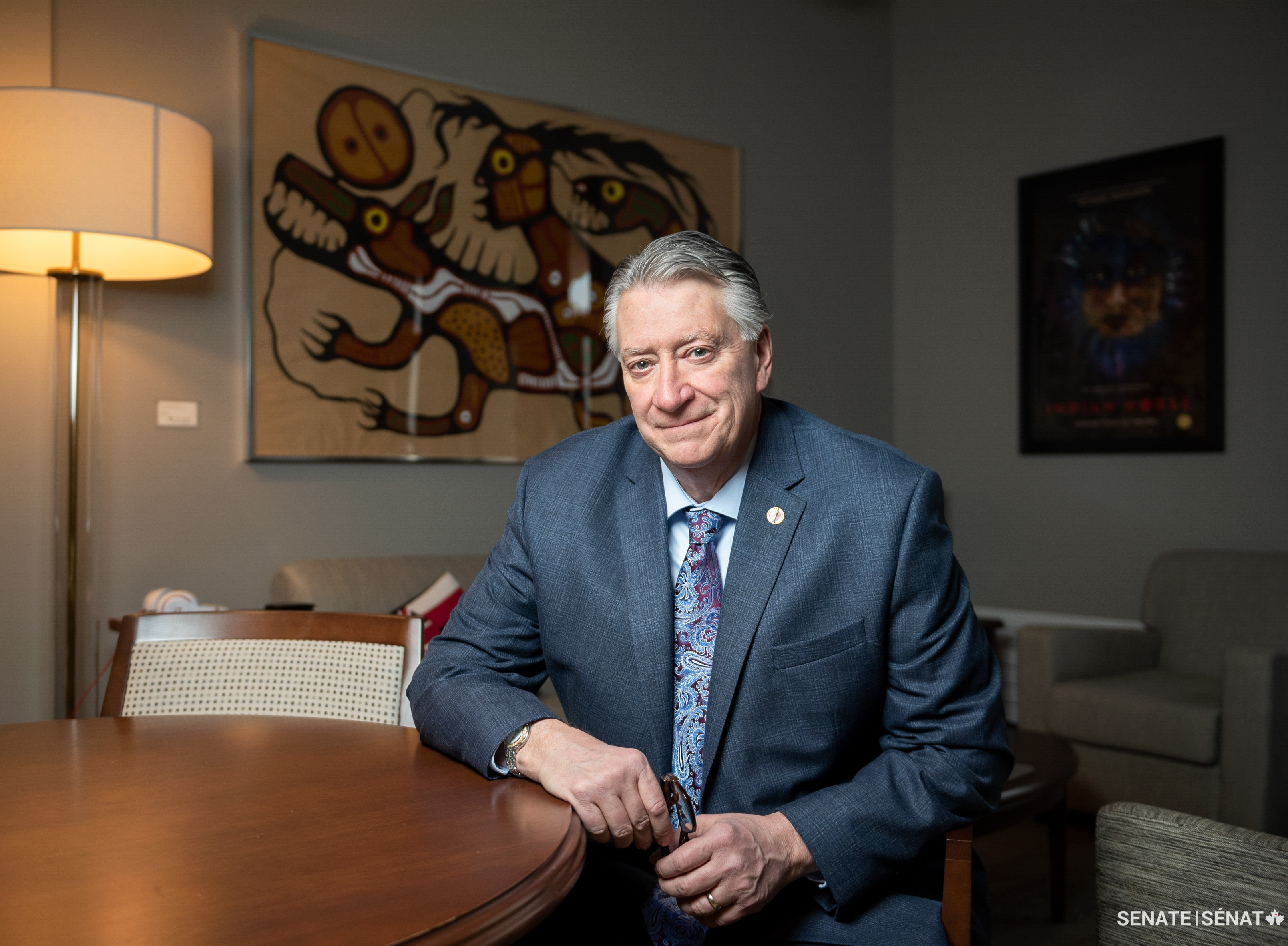Catching up on Centre Block’s rehabilitation with Senator Scott Tannas

In February 2019, the Senate moved to the Senate of Canada Building, a former train station built in 1912. The Senate will occupy this temporary location while Parliament’s Centre Block — the Senate’s permanent home — is rehabilitated.
Although Centre Block is shuttered for rehabilitation work, Canadians can still experience its art and architecture — as well as the Senate of Canada Building’s — through the Senate’s immersive virtual tours.
Another year has come and gone — and that means the massive and historic rehabilitation of Centre Block on Parliament Hill is one year further along. SenCAplus caught up with Senator Scott Tannas, chair of the Senate’s Subcommittee on Long Term Vision and Plan, to talk about why the building’s restoration matters to Canadians, notable project milestones and what aspects of the building’s modernization he’s excited to see come to life.
Q: Why is it important to invest in the rehabilitation of the Centre Block building and what benefits does it bring to Canadians?
Senator Tannas: The Centre Block and Parliament Hill are symbols of democracy in Canada and will continue to be, I hope, for hundreds of years — so the building has to be maintained and modernized. The Long Term Vision and Plan (LTVP) was put in place almost 20 years ago with a very long horizon to make sure all the historic buildings from the 1850s, 1860s, 1870s and all the way along, as the operations of Parliament have grown, are maintained and preserved for future generations.
Q: Work on Centre Block’s rehabilitation continued steadily throughout the COVID-19 pandemic. What have been some notable milestones in the project over the last 3-5 years?
Senator Tannas: It is remarkable that the footprint of Centre Block is being expanded — almost doubled, in fact — but it’s being done underground. When the construction is done, the building won’t look much different but there will be a new, interconnected three-storey building underground for the use and benefit of visitors, as well as parliamentarians. That, in and of itself, is an amazing feat.
Another incredible piece is the earthquake proofing that is being conducted underneath the main historic building. They basically tunnelled underneath and placed spring-loaded footings underneath the building to support it better during earthquakes, both small and major.
 Upgrading Centre Block to meet modern seismic standards involves excavation work around the building’s foundation. The entire building will eventually float on a grid of steel and reinforced concrete, which will rest on shock-absorbing base isolators.
Upgrading Centre Block to meet modern seismic standards involves excavation work around the building’s foundation. The entire building will eventually float on a grid of steel and reinforced concrete, which will rest on shock-absorbing base isolators.
Q: During your most recent site visit to Centre Block, what stood out to you the most?
Senator Tannas: You forget the level of detail in the woodwork, the stone carvings and all the bits and pieces of that glorious interior. Senators haven’t seen the inside now for about five years, since we moved out of the Centre Block and into the Senate of Canada Building. There were a few spots when I was crawling through the building where I remembered and reappreciated just how much detail was incorporated by the craftsmen who built the building in the 1920s.
Also, the size of the excavation and some of the earthquake proofing was most impressive.
 The ground directly in front of Centre Block on Parliament Hill — seen here in May 2023 — is being excavated in order to build a new underground welcome centre for visitors. (Photo credit: Public Services and Procurement Canada)
The ground directly in front of Centre Block on Parliament Hill — seen here in May 2023 — is being excavated in order to build a new underground welcome centre for visitors. (Photo credit: Public Services and Procurement Canada)
Q: Which aspect of the Centre Block rehabilitation project are you most excited to see come to life?
Senator Tannas: One is just to see all that extra space for visitors! My understanding is just before we closed down the building, we were getting close to 600,000 visitors a year, so we can expect that number to continue to grow once we’re back in there. The Parliament Welcome Centre and its design will really enhance the experience that Canadians will get when they visit Parliament.
The next thing is the scope of the tunnel system connecting the buildings in the Parliamentary Precinct. That tunnel system, I think, will be the most important and useful enhancement — together with the Parliament Welcome Centre — for the next 100 years. It’s not very sexy to say, “The tunnels will be great!” But being able to have people and goods moving underneath in a secure space will be really important.
Source: PSPC
Q: What kind of progress can Canadians expect to see on Centre Block’s rehabilitation in the next year or two?
Senator Tannas: There’s something I think people may not have even noticed, but Centre Block is slowly being wrapped with tarpaulin that is printed to look exactly as if it was the outside of the building. You can see it now on the north and east sides. We’ll see more of that in the coming years, and I think it’ll be fun and interesting to see how it functions for us when they get into the heavy work that needs doing on the outside of the building. Our eyes will think we’re looking at the real Centre Block!
 Senator Scott Tannas, chair of the Senate’s Subcommittee on Long Term Vision and Plan, observes the installation of tarpaulin printed to look exactly like the exterior of Centre Block — known as trompe l’oeil — on May 12, 2022.
Senator Scott Tannas, chair of the Senate’s Subcommittee on Long Term Vision and Plan, observes the installation of tarpaulin printed to look exactly like the exterior of Centre Block — known as trompe l’oeil — on May 12, 2022.
Q: What files related to the rehabilitation will the Senate’s Subcommittee on LTVP be focused on over the next couple of years?
Senator Tannas: I would say we’re in the final segments of design decisions in terms of deciding what goes where. We will soon get into those types of decisions for the Senate Office Complex as part of the Block 2 redevelopment project across the street from Centre Block. In parallel to all of this, we are also planning interim accommodations in the building at 40 Elgin St. for senators moving out of the Victoria Building. So, there is a lot going on and a lot for the LTVP Subcommittee to examine over the next little while.
Q: You’ve been chair of the LTVP Subcommittee on-and-off since 2016. What do you love most about serving in this role?
Senator Tannas: I’m a person who built an entire career by looking at things as how I want them to be in the future, working backwards to where I am today and then building a plan that bridges today to the future. And this whole project is about the future! It’s so much fun for me to engage in projects where you’re making decisions today, knowing it’ll be a long time before you’ll be able to physically see the results and touch them. I’ve always enjoyed that exercise.
 Senator Scott Tannas photographed in his office in the Senate of Canada Building on December 7, 2023. He has served as chair of the Senate’s Subcommittee on Long Term Vision and Plan on-and-off since 2016.
Senator Scott Tannas photographed in his office in the Senate of Canada Building on December 7, 2023. He has served as chair of the Senate’s Subcommittee on Long Term Vision and Plan on-and-off since 2016.


